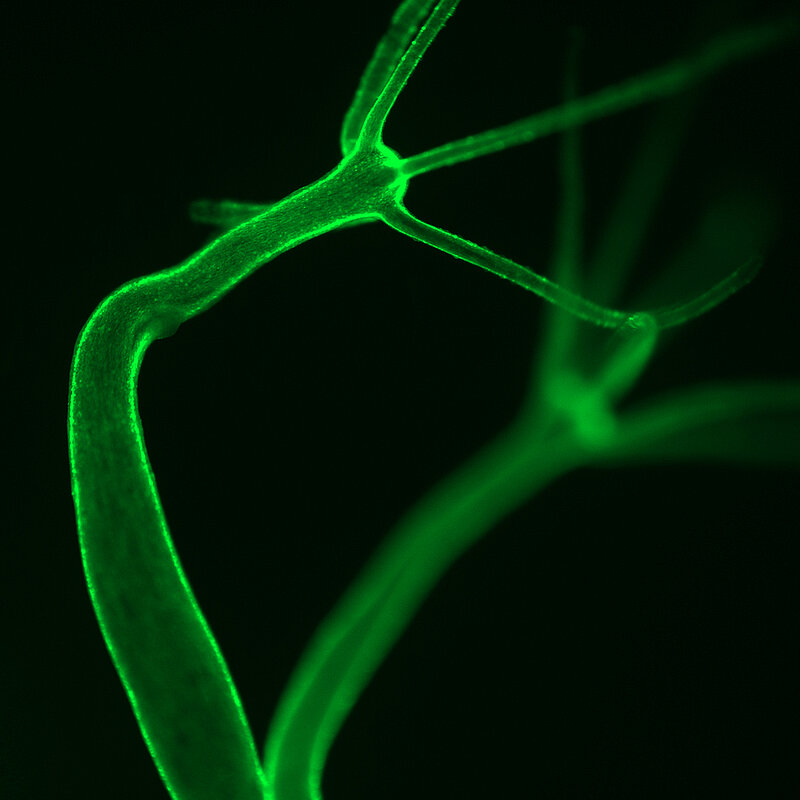During embryo development, groups of cells self-organize and shape themselves into various tissues and organs at precise locations within the body. To do so, they use information from the environment and communicate with each other to establish a basic structure or pattern for shape formation, also known as the body plan. How mechanical signals help cells create an ordered pattern from a totally disordered state remains unknown.
The research group of Pavel Tomancak (PoL Associate) at the Max Planck Institute of Molecular Cell Biology and Genetics (MPI-CBG), in collaboration with the groups of Carl Modes (PoL Associate; MPI-CBG) and Christoph Zechner (PoL Affiliate; MPI-CBG Alumni), took a closer look at this question. To study the self-organization abilities of cells without external environmental interference during the patterning process, the researchers worked with Hydra, a small freshwater invertebrate animal belonging to the phylum Cnidaria, which is known for its simple body plan and its regenerative capabilities.
“We mixed up 10,000 to 100,000 cells of Hydra into a clump of dissociated cells. Through the amazing regenerative abilities, the cell clump was able to form tissues and create a new pattern and shape and even a complete Hydra,” explains Anaïs Bailles, the first author of the study. “To understand the mechanisms behind this, we perturbed the tissue’s physical constraints. While a change in topology and geometry did not have a direct effect, a stretch on one side strongly biased the orientation of actin, a meshwork of hair-like filament structures that give the cell its mechanical properties. In the direction of where we stretched, the body axis of the Hydra aligned, and later the head appeared.”
Pavel Tomancak, who oversaw the study, summarizes, “We show that tissue mechanics can trigger the mechanochemical self-organization toward a functional organism. These results provide new insights into the mechanisms of organism shape formation and have implications for our understanding of development and tissue engineering.”
--------------
Original Publiction
Anaïs Bailles, Giulia Serafini, Heino Andreas, Christoph Zechner, Carl D. Modes, Pavel Tomancak: Anisotropic stretch biases the self-organization of actin fibers in multicellular Hydra aggregates. PNAS, August 4, 2025, 122 (32) e2423437122
